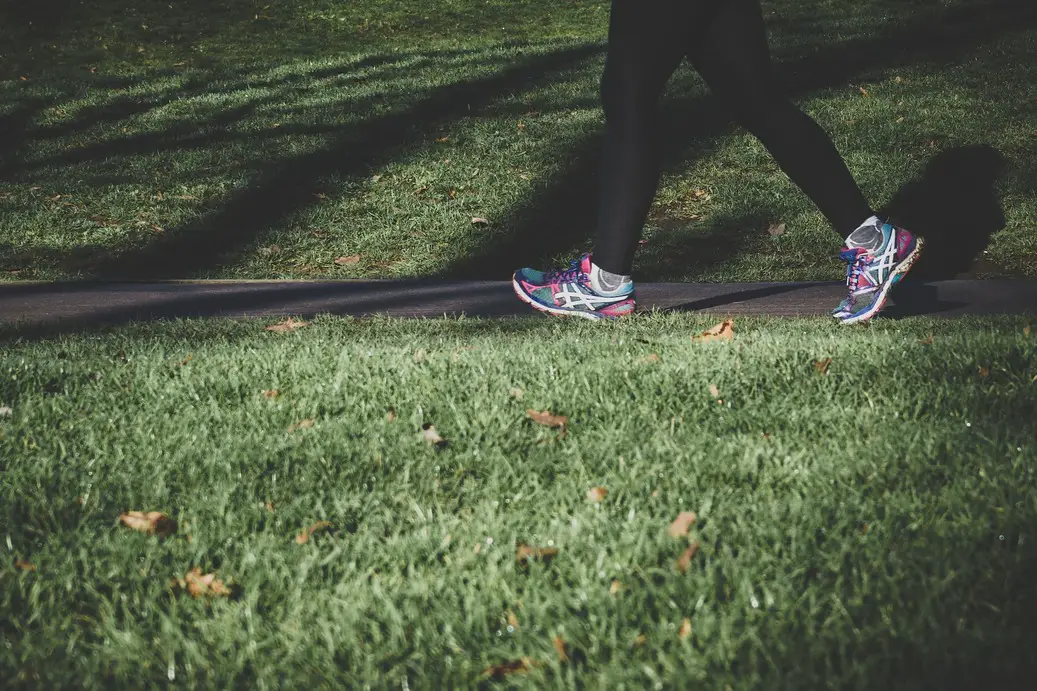Is Hiking A Low Impact Exercise?

Hiking is generally considered a low-impact form of exercise. This means that it is easy on your joints and muscles and does not put too much stress on your body. However, hiking CAN be a high-impact activity under specific circumstances. So, what’s the difference? What makes hiking low impact or high impact? In this article, we’ll explore the factors that affect the impact of hiking and help you decide if it’s the right type of exercise for you.
Quick Links
What Is Considered Low Impact Exercise?
When most people think of low-impact exercises, they think of activities like walking, biking, or swimming. These are all great examples of low-impact activities that are easy on your body and good for your health.
So, what makes an exercise low impact? Generally, low-impact exercises are those that do not involve sudden, jarring movements or high levels of impact on your joints and muscles. They are typically gentle on your body and easy to recover from.
What Is Considered A High Impact Exercise?
In contrast, high-impact exercises are those that involve more stress on your body. These exercises may be more intense and may require more effort to recover from. Examples of high-impact exercises include running, jumping, or playing contact sports.
These activities can be great for your health but may not be suitable for everyone. People with certain health conditions or injuries may need to avoid high-impact exercises.
Is Hiking Low Impact Or High Impact?
Hiking can be considered a low-impact exercise for most people. It is not generally a high-intensity activity and does not stress your body much. When most people think of hiking, they think of a leisurely walk in the woods.
However, there are some circumstances where hiking can be considered a high-impact activity. If you carry a heavy backpack or climb steep hills, your body must work harder. This can lead to more strain on your muscles and joints. Now that’s not necessarily a bad thing! As I mentioned, high-impact workouts are also incredible for your health. But let’s figure out when hiking becomes a high-impact activity.
When Does Hiking Become High Impact?
There are several different factors that can affect the impact of hiking. In this section, we’ll go over a few of the most common ones.
The first factor lies in the terrain. If you are hiking on even, well-maintained trails, your hike will likely have low impact. However, if you are hiking on rough, uneven terrain, your hike can quickly become high-impact. Think about it this way- if your trail is full of roots and rocks, your body has to work harder to maintain balance and avoid injury. This can put a lot of stress on your joints and muscles and lead to fatigue.
The second factor is the incline of the trail. If you are hiking uphill, your body will be working harder than if you are hiking on flat or gently rolling terrain. This can put additional strain and weight on the impact on your joints.
The third factor is added weight. If you are carrying extra weight, hiking can be a high-impact activity. The heavier you are, the more stress you put on your body with each step. This can be affected by your fitness level, being overweight, or carrying a heavy backpack.
The fourth factor is the speed at which you are hiking. If you are hiking slowly and taking your time, your hike will likely be low impact. However, your hike can become high-impact if you are moving quickly or running. This is because your body will absorb more force with each step. And you might ask yourself, who runs through a hike? Well, I’ve seen it.
Health Benefits of Low Impact Vs High Impact Hiking
Now, let’s take a look at the health benefits of low-impact and high-impact hiking.
Low Impact Hiking Health Benefits
Low-impact hiking is typically easier on your body and may be a good option if you are new to exercise, recovering from an injury, or have certain health conditions. However, don’t be fooled- low-impact hiking can still provide plenty of health benefits!
Some of the health benefits of low-impact hiking include:
- Lowered risk of injury
- Increased cardiovascular fitness
- Improved mental health
- Increased muscle strength
- Decreased stress levels
- Improved joint mobility
- Improved balance and coordination
High Impact Hiking Health Benefits
High-impact hiking may be more challenging, but it also has its own health benefits. Some of the benefits of high-impact hiking include:
- Increased calorie burn
- Increased muscle strength
- Improved bone density
- Improved cardiovascular fitness
- Decreased stress levels
- Improved joint mobility
- Improved balance and coordination
Risks of High Impact Hiking
I won’t get into low-impact risks of hiking since the risks are generally going to be your regular hiking and outdoor risks, like getting lost or being attacked by a wild animal. But with high-impact hiking, there are a few risks to be aware of.
Increased risk of injury
Incredibly high-impact hiking can put a lot of stress on your body and lead to injuries. This is especially true if you are not used to exercising at a high intensity or have certain health conditions. What you really need to be careful about are your knees. Knee injuries while hiking are incredibly common, and high-impact hiking can put you at a higher risk.
Exhaustion & Dehydration
Since high-impact hiking requires more energy, you may be at a higher risk of exhaustion. Be sure to bring plenty of food and water and take breaks as needed.
Dehydration can also be risky with high-impact hiking since you will sweat a lot more. Be sure to stay hydrated by drinking plenty of fluids and carrying extra water with you if necessary. Most people always underestimate how much water to bring on a hike.
Exacerbation of certain health conditions
If you have certain health conditions, such as heart disease, high blood pressure, or diabetes, high-impact hiking may not be the best activity for you. This is because it can put additional strain on your heart and raise your blood pressure. If you have any concerns, be sure to talk to your doctor before starting a high-impact hiking routine.
Muscle soreness
High-impact hiking can lead to muscle soreness, especially if you are not used to exercising at a high intensity. This is because your muscles will be working harder than they are used to. Be sure to stretch before and after your hike, and consider using an ice pack or taking a hot bath to help relieve any muscle soreness.
Muscle soreness isn’t inherently a bad thing, but it sure as heck can be uncomfortable and might make it hard to walk the next day. So just be aware that it is possible if you go for a high-impact hike.
Fatigue
High-impact hiking can also lead to fatigue since it takes a lot more energy than low-impact hiking. Fatigue can make it hard to focus and increase your risk of injury. Be sure to take breaks as needed and listen to your body. If you are feeling tired, it is probably time to call it a day.
Conclusion
Hiking is a great way to get exercise, fresh air, and spend time in nature. But it’s important to choose the right type of hike for your fitness level and health conditions. Low-impact hiking may be a better option if you are new to exercise or have certain health conditions. However, high-impact hiking can also provide plenty of health benefits – just make sure you’re aware of the risks and take precautions to prevent injuries.






